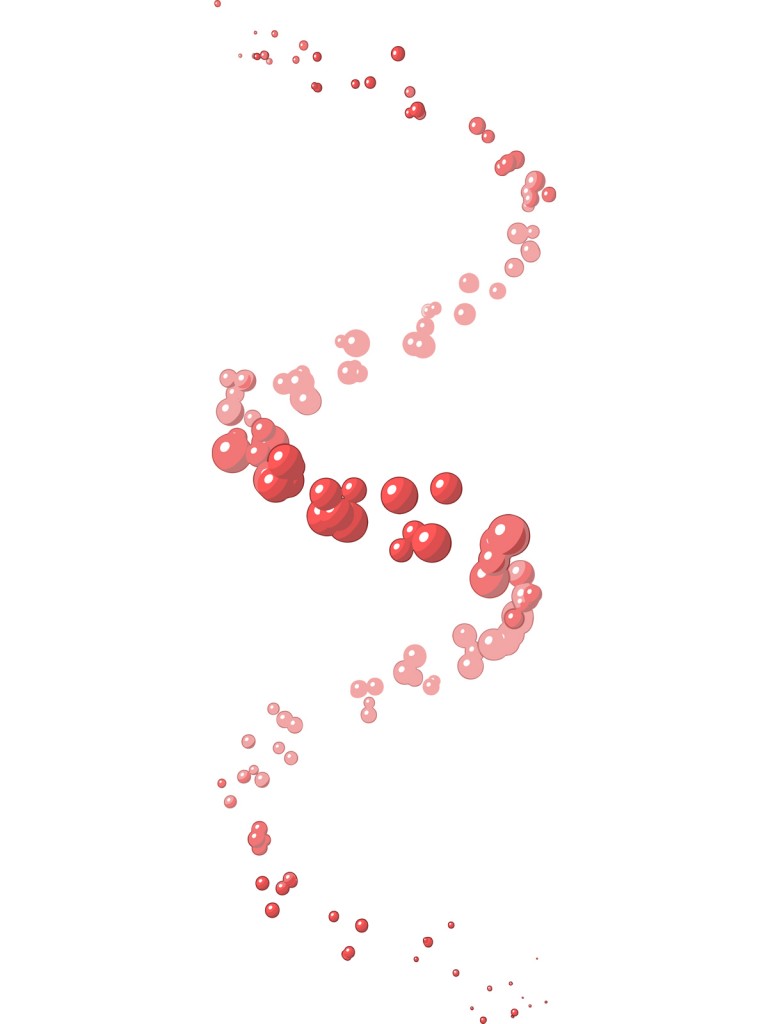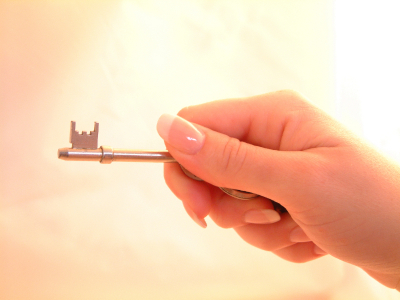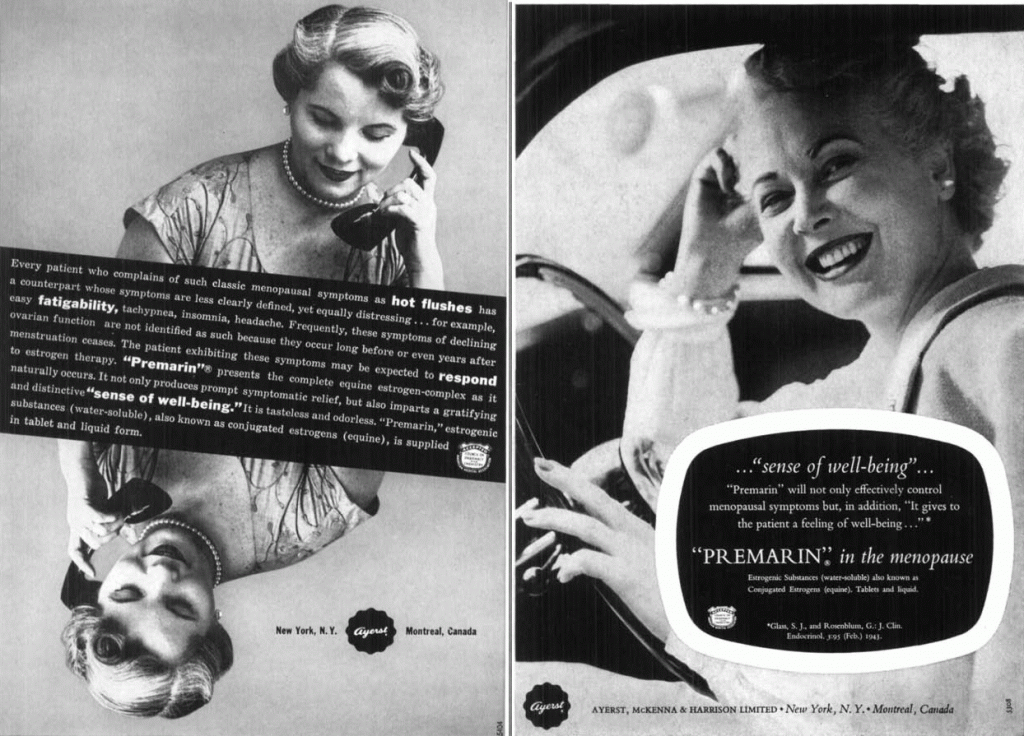Nonhormonal versus non-pharmaceutical
 HRT has suffered quite a hit in recent years and as a result, the Menopause Industrial Complex has been scrambling to find a viable replacement. And while I would like to believe in that altruism is driving the train, the cynic in me truly believes that it’s mostly profit motivated. That being said, I do admire the tenacity of industry to attempt to find a reasonable replacement for HRT (and hopefully a safer one) for women who want a fix for troublesome vasomotor symptoms — hot flashes and night sweats — and don’t want to make the effort or don’t understand how to navigate the landscape of alternative strategies.
HRT has suffered quite a hit in recent years and as a result, the Menopause Industrial Complex has been scrambling to find a viable replacement. And while I would like to believe in that altruism is driving the train, the cynic in me truly believes that it’s mostly profit motivated. That being said, I do admire the tenacity of industry to attempt to find a reasonable replacement for HRT (and hopefully a safer one) for women who want a fix for troublesome vasomotor symptoms — hot flashes and night sweats — and don’t want to make the effort or don’t understand how to navigate the landscape of alternative strategies.
However, let’s be clear: there is a distinction between nonhormonal treatments and non-pharmaceutical treatments, hence, when you start hearing about ‘nonhormonal’ options, be sure to ask what that means, because it’s likely that it means ‘not HRT,’ such as a new non-hormonal pharmaceutical alternative to HRT: LDMP, better known as low-dose paroxetine. For those of you who are unfamiliar with paroxetine, it is a type of SSRI used in the treatment of depression, panic disorder and social anxiety disorder; the popular antidepressant Paxil is a form of paroxetine.
Paroxetine is not the first antidepressant to be studied in menopausal women and you may recall that I wrote about the use of Lexapro for hot flashes about a year and a half ago. You can find that post here. However, paroxetine is the antidepressant that’s all the buzz right now, since Noven Pharmaceuticals presented two studies last week at the North American Menopause Society annual meeting. Note that it’s been reframed as ‘low-dose non-hormonal therapy for menopausal vasomotor symptoms,’ but ya still gotta call a spade a spade and what it is is an antidepressant.
Here’s what you need to know:
In one of two studies, 568 women (40+ years of age) who experienced 7 to 8 moderate or severe hot flashes on a daily basis of 50 to 60 on a weekly basis took either 7.5 mg of LDMP or placebo daily over six months. By the end of the first month (and in contrast to the study’s start), women who were taking LDMP experienced 28.9 fewer hot flashes per week (compared to 19 fewer per week for women taking placebo pills). By the third month, this increased by roughly 10 fewer per week in both groups. The severity of the hot flashes also significantly decreased. Safety wise, women taking LDMP reported nausea and bronchitis.
In the complementary study, which lasted for three months, 606 women in the same demographic took the same dose of LDMP or placebo. Decreases in mean number of flashes per week were pretty much on par with the first study (33 compared to 23.5 for placebo) and similarly, a trend towards maintaining and growing benefits were observed. Severity of hot flashes also declined but by the study’s end, were not significantly different than placebo. This time, women who took LDMP most frequently reported dizziness and fatigue.
Dr. James Simon, one of the studies’ investigators and a professor of ob/gyn at GWU School of Medicine claims that symptoms of menopause often go untreated when women are unable or unwilling to take hormone therapy, which is not entirely true. Another investigator — Dr. Andrew Kaunitz from the University of Florida College of Medicine in Jacksonville notes that if LDMP is approved by the FDA, “it could be the first nonhormonal option available for women.” Again, this statement is not entirely true. LDMP has the potential to become the first nonhormonal treatment APPROVED by FDA for vasomotor symptoms in menopausal women. There are other options out there but on the most part, they are not embraced by Western practitioners. Take note: while many Western practitioners will argue until they are blue in the face that alternative strategies have no role, are no better than placebo, and do not have evidenced-based trial data to support their use, they are simply incorrect. An unequivocal statement about every alternative strategy available to wo-man is bad medicine at best and at worst? Sheer ignorance.
Back to LDMP…LDMP appears to effectively diminish hot flashes and sweats but it is not without side effects. And while the dosage is considerably lower than full-strength antidepressants, we don’t have enough information to know if it will ultimately mimic its higher dose partner; the most common side effects reported in these trials are the very same that have been reported with Paxil. Another common side effect of Paxil that has not been explored (at least not publicly) in these trials is the effects on libido and it is a well known fact that as many women go through menopause, they experience declines in sex drive, lubrication and the ability to reach orgasm.
I say that the verdict is still out. And that based on the way that communications about this agent are being framed, that it’s about the spin. I guess that time will tell.
Read More
HRT Personalized?
Have you heard of personalized medicine? This burgeoning movement in healthcare focuses on the individual and not the masses and relies on our unique biological and genetic profiles to guide therapy choice.
With all the hullabaloo over hormone replacement therapy (HRT), mixed data about risks and benefits and a lack of a clear path for women who choose to go this route, personalized medicine might hold the answer. In fact, in an online review in Metabolism, authors are exploring the very idea that some women may be more ideally suited than others for hormone therapy. Personalized medicine may also make it possible to tailor dosing, formulation and even route of delivery to make the benefit-risk ratio, which we know has been swinging toward the negative, more balanced and favourable.
Although a recent report has come out disputing the role of hormone therapy in increasing risk for heart issues, data from the Women’s Health Study showed that compared to placebo, women who took combination hormones were 24% more likely to develop heart disease (i.e. heart attack or coronary death), up to 40% liklier to have a stroke and twice as likely to develop a blood clot in the lungs. Women who took estrogen only had almost a 40% increased risk for stroke and a trend towards an increased risk for developing a clot in the arteries leading to the lungs. Yet, these results might not be applicable to all as research suggests that factors such as age, time since the onset of menopause, LDL and other cholesterol levels and the presence or absence of metabolic disease may be able to help identify women who are better versus worse candidates for HRT (and likely or less likely to have elevated risk). Moreover, emerging evidence suggests that women who already have an elevated risk for stroke should either avoid systemic hormone therapy or choose a safer delivery method, e.g., a transdermal (through the skin).
A number of experts believe that using lower doses of hormones, bioidentical compounds, and going the transdermal route may very well change the benefit/risk ratio as well, primarily due to reduce blood levels of circulating hormones or as with transdermals, the fact that the drug doesn’t pass through the liver. In some cases, however, the data are scant and randomized clinical trial evidence, also referred to in medical circles as evidenced-based medicine, may be lacking. Still, I do believe that personalized medicine may hold the key for millions of women who can’t find relief through alternative strategies or simply desire more immediate relief. Perhaps some of these very factors that researchers are exploring will remove some of the roadblocks. Meanwhile, pay attention to the variety of factors that may the golden ticket — factors like age, time since menopause, heart health, existing breast cancer risk, biomarkers in the blood and genetic predisposition. Who knows? HRT personalized might be just around the corner.
Read MoreWednesday Bubble: It’s in the DNA, right?
 Aging, it’s in the DNA, right?
Aging, it’s in the DNA, right?
Actually, it’s a bit more complicated than that, but it appears that the length of your telomeres may be an important key.
Telo what?
Telomeres are little caps at the end of chromosomes that keep your genetic information intact and stable. In a sense, the body created telomeres to protect our genetic information and insure that it’s passed down to the next generation. Their gatekeepers are an enzyme called telemorase, and it insures telemere health. And while the length of our telemeres tend to shorten as we age, factors like health behavior, disease and exposure to internal inflammation and oxygen free radicals in the blood can also affect their length and stability, and promote illness that give aging a bad name in the first place.
Fortunately, it’s not all about genes. In fact, researchers now say that taking adequate amounts of omega-3 fatty acids may actually improve the odds.
Indeed, when researchers provided different doses of omega-3s (or placebo pills) to 106 healthy but sedentary middle aged men and women and asked them to take them daily for four months, they found that significant and beneficial changes in telomere length. The low down:
- Participants took 2.5 g daily or 1.25 gram daily of omega-3 fatty acids (in a ratio of 7:1 EPA/DHA since EPA has shown to have stronger anti-inflammatory effects than DHA) or placebo. The placebo contained a mixture of oils designed to mimic the amount of fats that US adults typically consume in a day.
- Both groups of people taking omega-3s showed significant declines in the amount of inflammation in their body.
- The ratio of omega 3 and omega 6 were important: in fact, the lower the ratio, the longer the telomeres.
The researchers say that on average, most Americans consume a diet of omega-3s in a ratio that’s skewed towards omega-6, which comes in the form of vegetable oils im most people’s diets. The average diet tends to be low in omega-3s, the fatty acids typically found in cold-water fish like salmon or mackerel. But when the average ratio of omega-6/omega-3s is lowered from about 15:1 to 4:1 or 2:1, there are benefits to be had. In this case, the benefits are in the form of longer telomeres and in turn, the potential to reduce the risk for age-related diseases.
In a related press release, study co-author Ron Glaser makes an analogy to shoelaces, explaining that short fragments of DNA, telomeres, act as caps at the end of chromosomes,much like the protective plastic at the end of a shoelace. “If that plastic comes off, the shoelace unravels and it doesn’t work anymore. In the same way, every time a cell divides, it loses a bit of its DNA at the ends and over time, can cause significant problems.”
The bottom line is pretty clear: change your omega-3 ratio and you may change your aging odds. Sounds like a win-win.
(This study appears in the advanced online edition of Brain, Behavior and Immunology).
Read More
Hormone Replacement…for that sense of wellbeing
I ran across a piece in yesterday’s New York Times highlighting that Roche Pharmaceuticals was closing its Nutley, NJ plant where it first developed Valium and its predecessor, Librium. In it, writer Robin Marantz Henig notes that these two agents were actually marketed to physicians as medications that could help individuals feel ‘normal,’ (that is, if normal means walking around in a pleasant fog that masks reality). Henig writes “As Roche closes its New Jersey headquarters, it plans to open a smaller research facility in Manhattan in late 2013, part of a wave that city officials hope will turn New York into a biotech mecca. The company’s transition reminds us of a phenomenon that’s become so common we no longer even think of it as weird: the oxymoronic attainment, through using drugs to make you feel more like yourself, of an artificially induced normal.”
This thought got me wondering if we had actually gone full circle, where the ultimate goal of treatments for menopausal symptoms are to help a woman feel normal again without addressing underlying issues that may be exacerbating how she feels or how her symptoms manifest, things like life stressors, obesity, thyroid imbalances and intimacy problems.
Is HRT (or low dose HRT, which industry has quickly created to replace controversial products like Premarin) soon to be the ‘new normal?’ Granted, the only fog it creates may be the one that removes common sense from the equation in a woman’s quest to replace that which is missing. Ironically, agents like valium and librium similarly took the edge off the very factors likely causing anxiety in the first place.
And so, on a Monday, I pose this question:
What does your new normal look like?
It seems that everything that’s old may very well be new again.
Read More








